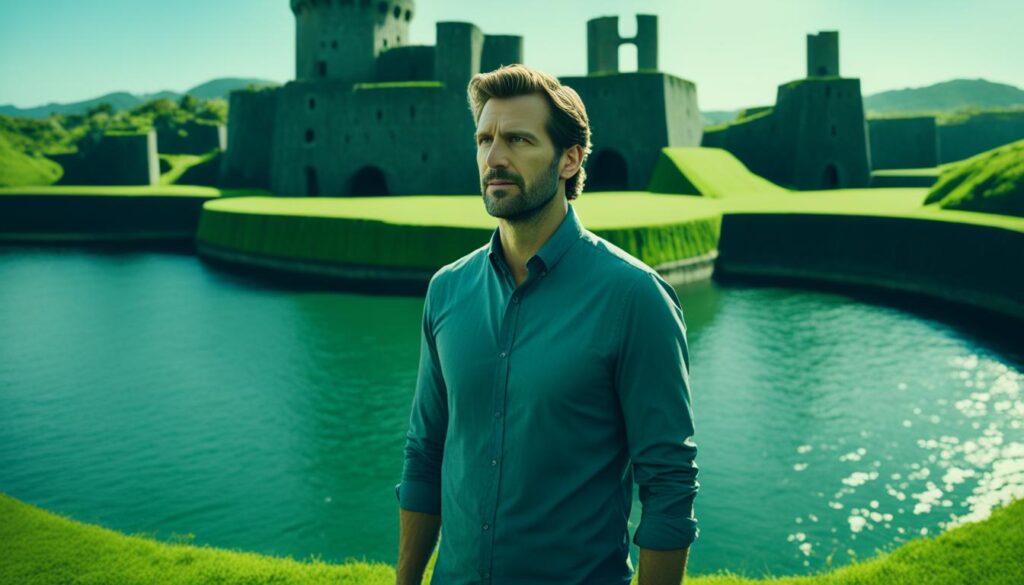In the world of business, not all clients are created equal. While some clients can be a dream to work with, others may present red flags and warning signs that could potentially lead to a challenging and unproductive partnership. It is essential to be able to identify these warning signs early on and make informed decisions to protect your creative vision and business goals.
Key Takeaways:
- Recognizing warning signs in client selection is crucial for maintaining a mutually beneficial partnership.
- Pay attention to clients who are married to their ideas, as they may be resistant to feedback and collaboration.
- Be cautious if a client discounts or questions your portfolio, as it may indicate a mismatch in goals and expectations.
- Watch out for clients who are title obsessed, as they may prioritize hierarchy over creative success and control.
- Be wary of clients who suggest shortcuts or undermine the value of your creative work, as this can lead to dissatisfaction and compromised results.
Recognizing Clients Who Are Married to Their Ideas
Clients who are married to their ideas can present challenges in the creative process. Their resistance to feedback and collaboration can hinder the project’s success. It is crucial to identify the red flags that indicate a client’s inflexibility early on. By recognizing these warning signs, you can avoid projects that may not align with your creative vision and goals.
One major sign of a client married to their ideas is their rejection or skepticism towards the majority of your concepts. They may dismiss your proposals without giving them a fair consideration or showing a willingness to discuss alternative approaches. This rigidity can stifle creativity and hinder effective collaboration.
Another indicator is when a client clings to concepts developed by other agencies or sources. They may be unwilling to let go of preconceived notions or ideas that may not be the best fit for their project. This can limit your ability to bring fresh and innovative solutions to the table.
Recognizing these red flags is essential for maintaining a productive working relationship. Collaborating with a client who is open to feedback and willing to explore different ideas will lead to better results and a more satisfying outcome.
Client’s Married to Their Ideas: Recognizing the Red Flags
“It’s important to pay attention to clients who exhibit a strong attachment to their ideas. While they may have a clear vision, it is essential to evaluate their openness to collaboration and feedback. Overcoming initial resistance and fostering a collaborative environment can lead to more successful outcomes.”
By identifying clients who are married to their ideas, you can make informed decisions about whether to pursue a partnership. Recognizing these red flags early on can save time, energy, and resources, allowing you to focus on clients who are more open to collaboration and value your expertise.

The Issue of Discounting Your Portfolio
When clients question or discount your portfolio, it can be a red flag indicating a potential mismatch in goals and expectations. If a client is not appreciating or valuing your style and previous work, it may be a sign that they will not fully utilize your skills and expertise. This can lead to frustration and dissatisfaction in the project. It’s important to address these concerns during initial meetings to ensure alignment in creative vision and ownership.
The Impact of Discounting Your Portfolio
When a client discounts your portfolio, it raises doubts about their confidence in your abilities. They may question your skills, creativity, or suitability for the project. This lack of trust can hinder effective collaboration and compromise the outcome of the project.
“A client’s hesitation to appreciate your portfolio can be a sign of mismatched goals and expectations. It’s essential to address these concerns upfront to ensure a strong and productive working relationship.” – Emily Thompson, Creative Director at Design Studio Inc.

Strategies for Addressing Portfolio Discounting
When faced with clients who discount your portfolio, take a proactive approach to address their concerns and establish mutual understanding:
- Communicate Your Expertise: Clearly explain your design philosophy, expertise, and past successes to reaffirm your skills and capabilities.
- Showcase Relevant Work: Highlight projects that align with the client’s industry or goals to demonstrate your ability to deliver valuable results.
- Provide Testimonials: Share testimonials from satisfied clients to reinforce your credibility and expertise.
- Engage in Open Dialogue: Encourage open and honest communication, allowing clients to express their concerns and providing the opportunity to address them together.
- Set Realistic Expectations: Establish clear expectations and deliverables from the outset to align all parties involved.
The Importance of Alignment in Creative Vision and Ownership
By addressing the issue of portfolio discounting during initial meetings, you can ensure alignment in creative vision and ownership. It is crucial to have a shared understanding of the project’s goals, expectations, and creative direction to foster a successful long-term partnership. Open and transparent communication plays a vital role in building trust and creating a collaborative environment.
| Issue | Impact | Strategy |
|---|---|---|
| Discounting your portfolio | Doubts regarding your abilities | Communicate your expertise |
| Showcase relevant work | ||
| Provide testimonials | ||
| Engage in open dialogue | ||
| Set realistic expectations |
The Title Obsessed Client
Clients who are obsessed with titles can pose challenges in maintaining effective hierarchy and creative control within the client relationship. These clients may prioritize titles, such as listing numerous CEOs or advisory roles, over the success and objectives of the project itself. As a result, the emphasis on hierarchy can hinder collaborative decision-making processes and limit the designer’s ability to exercise creative control. Rather than assuming the role of a Creative Director, designers may find themselves relegated to that of a Creative Editor.
When dealing with a client obsessed with titles, it is crucial to gauge their level of design control and their willingness to foster a collaborative environment that allows for the free flow of creative ideas. By understanding their expectations and the extent to which they seek hierarchical validation, designers can determine whether the working dynamic aligns with their creative vision and objectives.
“Clients obsessed with titles may prioritize authority over collaboration and creative outcomes, which can hinder success in the overall project.”
To ensure a successful client-designer relationship, open and transparent communication is vital. Establishing clear boundaries and expectations from the start can help manage the client’s title-focused perspective while also asserting the designer’s role as an expert and partner in the creative process. Finding common ground and a balance between hierarchy and creative control is essential for fostering a productive and mutually beneficial client relationship.
Managing Hierarchy in Client Relationships
When faced with a title-obsessed client, consider implementing the following strategies to manage hierarchical expectations and maintain creative control:
- Clearly define roles and responsibilities: Establish a thorough understanding of the client’s expectations and their vision for the project. Clearly define the designer’s role and responsibilities to ensure there is a shared understanding of creative control.
- Regular check-ins and progress updates: Maintain open lines of communication with the client throughout the project. Provide regular updates on progress, seek feedback, and address any concerns regarding hierarchy or creative decision-making.
- Highlight expertise and industry knowledge: Demonstrate your expertise by sharing insights and recommendations based on your industry knowledge and experience. This can help shift the client’s focus from titles to the value you bring to the project.
- Invest in relationship building: Build a strong rapport with the client by fostering a collaborative and respectful working relationship. Showcasing your professionalism, reliability, and passion for the project can help establish trust and diminish the client’s reliance on titles.
By implementing these strategies, designers can navigate the challenges posed by title-obsessed clients while maintaining their creative control and fostering a productive working relationship.
Table: Pros and Cons of Working with Title-Obsessed Clients
| Pros | Cons |
|---|---|
| Opportunity for exposure and networking due to the client’s high-profile connections | Potential for limited creative freedom and control |
| Possibility of working on prestigious projects associated with high-ranking individuals | Risk of hierarchical decision-making overshadowing creative expertise |
| Potential for enhanced project visibility and credibility through association with influential figures | Difficulty in achieving a collaborative and balanced working dynamic |
Shortcutting the Process and Undermining Your Value
Clients who suggest shortcuts in the design process, such as using cheap design services or buying pre-made assets, may not fully understand or appreciate the value of your unique creative resources. These shortcuts can undermine your expertise and the trust in your ability to produce high-quality work that aligns with the project’s goals.
Engaging in discussions surrounding these shortcuts can indicate a potential mismatch in expectations and priorities. It’s important to educate your clients about the value of a well-crafted design process and the benefits it brings to their business. By explaining the importance of tailored solutions, customized designs, and the creative insights that come from a thorough process, you can help them see the value in investing in your creative expertise.
Showcasing the benefits of a comprehensive approach to design can foster a greater appreciation for the time, effort, and creativity that goes into your work. By emphasizing the advantages of a collaborative process and the ability to deliver unique, impactful designs, you can help clients understand the importance of investing in your skills and experience.
Remember that shortcuts may compromise the quality and effectiveness of the final product. It’s essential to communicate the potential drawbacks of cheap design services and pre-made assets, such as lack of originality, limited customization options, and a generic aesthetic that fails to differentiate their brand from competitors. Help your clients recognize that investing in your creative work will lead to a more successful and impactful outcome.
To illustrate the importance of investing in quality design services, consider the following comparison:
| Cheap Design Services | Professional Design Services |
|---|---|
| Generic, cookie-cutter designs | Customized, tailored designs |
| Limited design options | Extensive range of design possibilities |
| Lack of originality | Unique, creative solutions |
| Minimal consideration for brand identity | Strategic alignment with brand image and goals |
| Lower cost, but potential long-term expenses | Higher upfront investment with long-term value |
By presenting this comparison, you can demonstrate the advantages of professional design services and the potential risks associated with taking shortcuts. It’s important to emphasize the long-term benefits and return on investment that come from investing in your expertise and creative vision.
Conclusion
In conclusion, the success of your creative projects heavily relies on your ability to identify red flags in client selection and maintain mutually beneficial partnerships. By recognizing warning signs such as clients who are married to their ideas, discount your portfolio, become title obsessed, or suggest shortcuts, you can make informed decisions that align with your creative vision and goals. Trusting your instincts and prioritizing collaborative and respectful client relationships will pave the way for long-term success in your creative career.
Identifying red flags in client selection is crucial to avoid potential headaches and wasted time. Clients who are married to their ideas often resist feedback and collaboration, hindering the creative process. Those who discount your portfolio may not value your skills and expertise, leading to a mismatch in expectations. Similarly, clients who are obsessed with titles may prioritize hierarchy over the project’s success, limiting your creative control. Lastly, clients who suggest shortcuts may undervalue your unique creative resources.
Maintaining mutually beneficial partnerships requires careful consideration of these red flags. Being mindful of warning signs during initial meetings and discussions will help you avoid projects that do not align with your creative vision and goals. It allows you to choose clients who appreciate and value your expertise, fostering a collaborative and fulfilling working relationship. Remember, a successful creative career is built on mutual respect and shared vision between you and your clients.
FAQ
What are some warning signs of problematic clients in a business relationship?
Some warning signs of problematic clients in a business relationship include clients who are married to their ideas, discounting your portfolio, being title obsessed, or suggesting shortcuts like using cheap design services.
How do I recognize clients who are married to their ideas?
Clients who are married to their ideas often resist feedback and collaboration. Some signs include rejecting or showing skepticism towards the majority of your ideas, clinging to concepts developed by other agencies, and dismissing your alternative approaches.
Why is it important to address clients who question or discount my portfolio?
If a client questions or discounts your portfolio, it may indicate a potential mismatch in goals and expectations. It’s important to ensure alignment in creative vision and ownership to avoid frustration and dissatisfaction in the project.
What should I do if I encounter a client who is obsessed with titles?
Clients who are obsessed with titles may prioritize hierarchy over the success of the project. It’s crucial to assess the client’s degree of design control and willingness to collaborate effectively before committing to a project.
What should I do if a client suggests shortcuts in the design process?
Clients who suggest shortcuts like using cheap design services or buying pre-made assets may not fully understand or appreciate the value of your unique creative resources. Engaging in discussions surrounding these shortcuts can indicate a potential mismatch in expectations and priorities.
How can I identify red flags when selecting clients?
By recognizing warning signs such as clients married to their ideas, discounting your portfolio, being title obsessed, or suggesting shortcuts, you can make informed decisions about potential clients and avoid projects that may not align with your creative vision and goals. Trust your instincts and prioritize collaborative and respectful client relationships for long-term success.








